How pioneering UK photojournalists captured change
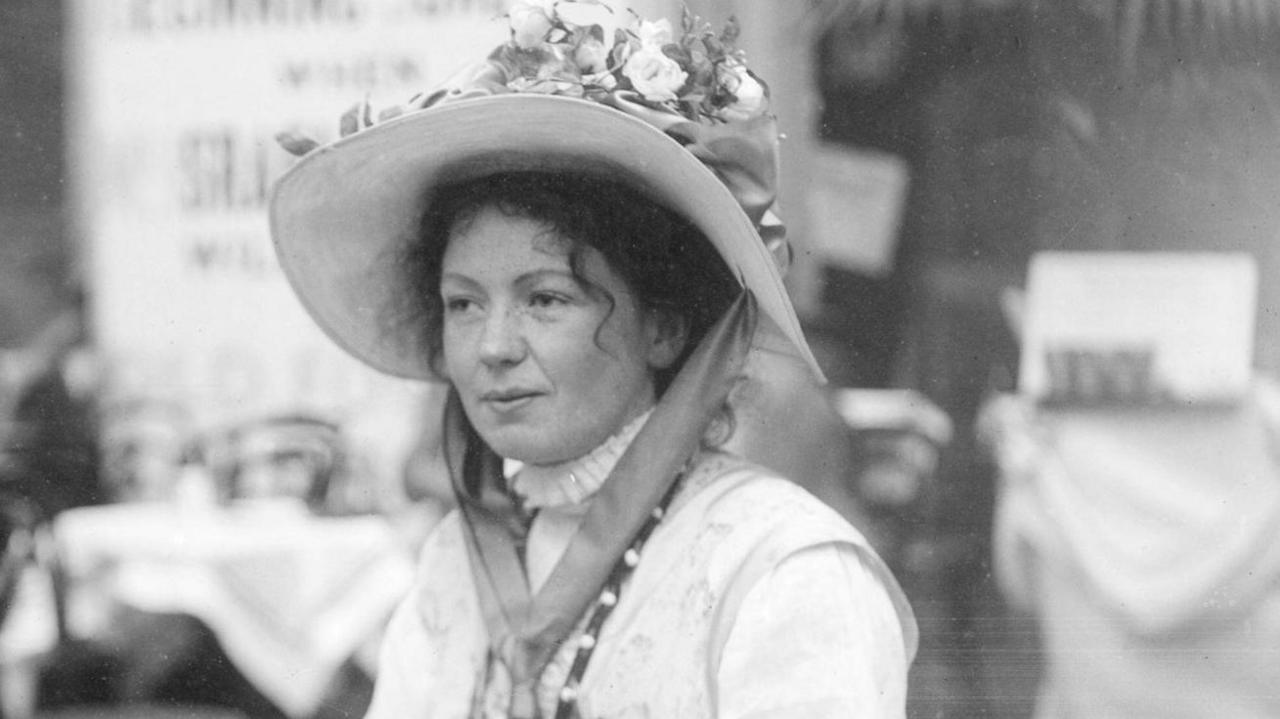
Christabel Pankhurst in a 1909 portrait by photojournalist Christina Broom
- Published
Two of the earliest pioneers of photojournalism, who captured groundbreaking images of street life and political upheaval, are being honoured with blue plaques at their former homes.
Christina Broom, one of Britain’s first female press photographers, recorded the burgeoning suffragette movement in the early 1900s.
John Thomson captured Victorian street characters, such as 'Hookey Alf of Whitechapel' and the 'Mush-Fakers' of Clapham, as well as his travels to Asia.
English Heritage's historian, Rebecca Preston, said both photojournalists were "working at the forefront of photography at a time when it was not the accessible medium that it is now".
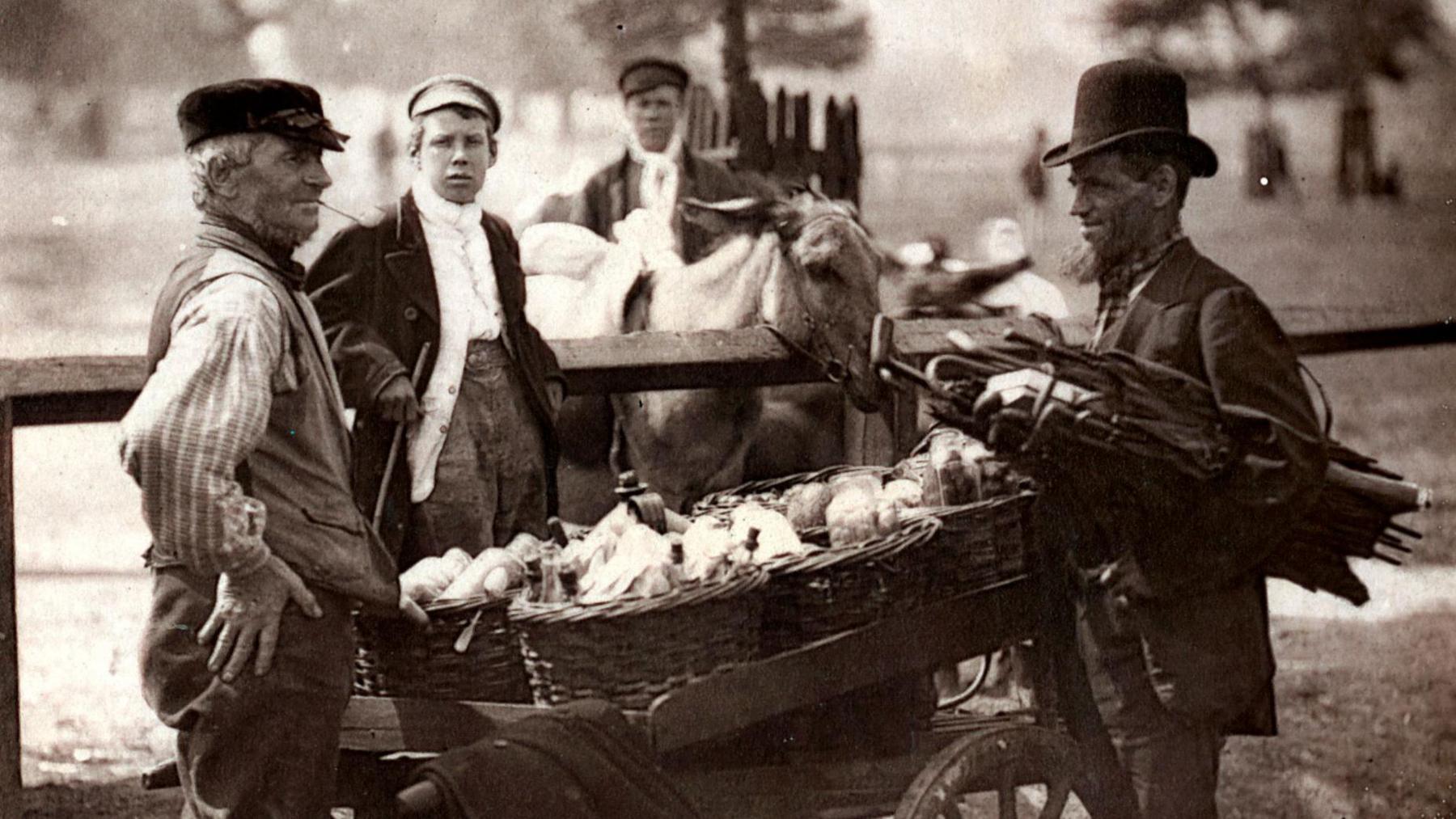
'Mush-fakers and ginger-beer makers,' pictured in Clapham in 1881
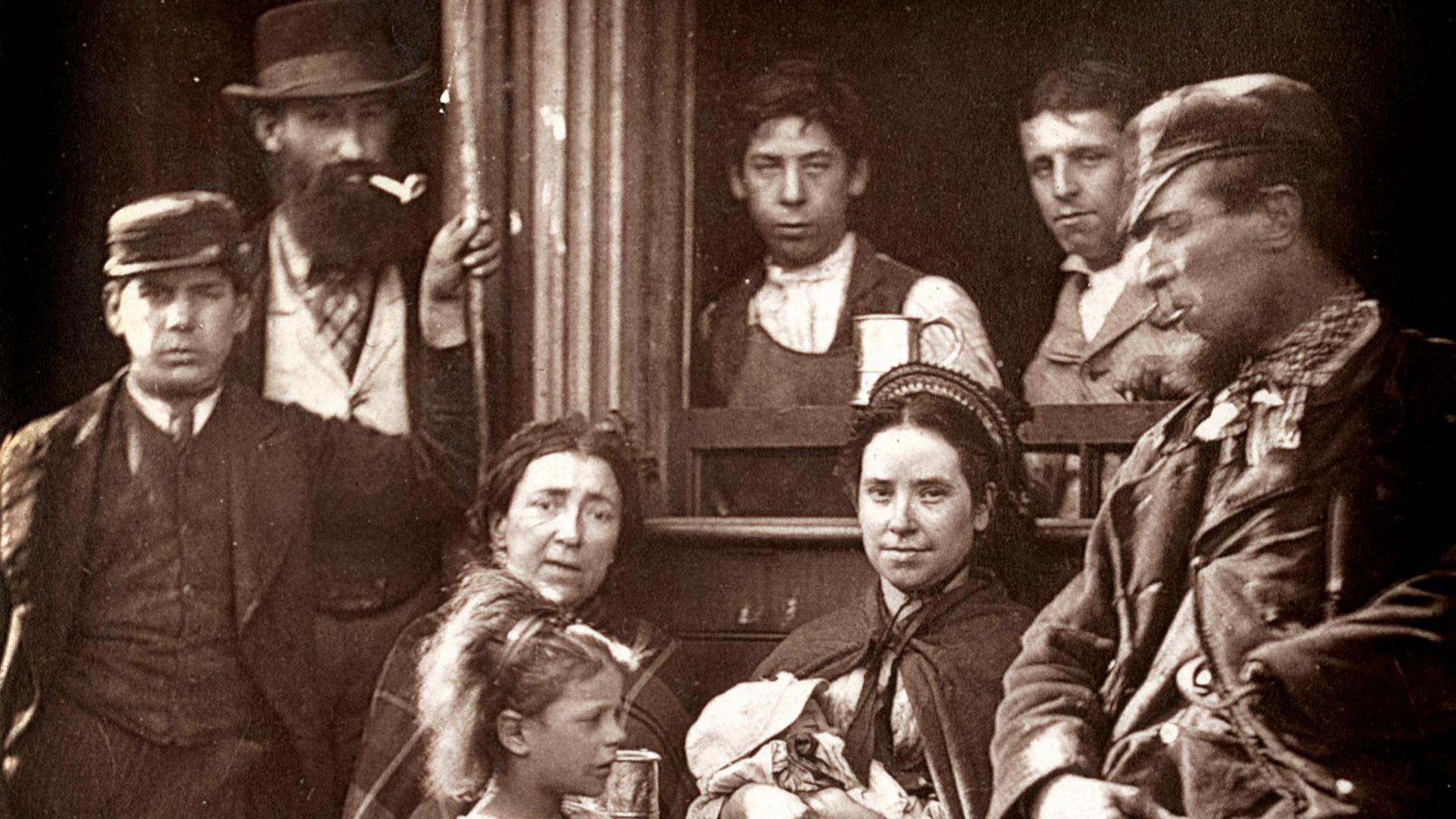
'Hookey Alf of Whitechapel' is pictured on the right, in John Thomson's London street scene
Christina Broom only began to experiment with photography in her forties, using a box camera.
Her life - and contribution to photojournalism - is being honoured with a blue plaque at the house in Munster Road, Fulham, west London, where she lived and worked, alongside her daughter Winifred.
Her pictures, including soldiers setting off to fight in World War One and members of the Royal Family, appeared in what was then a male-dominated newspaper industry.
From the early 1900s, Broom began to sell postcards of her photos from a stall beside Buckingham Palace, showing images of contemporary London, including historic images of the women's suffragette movement.
Broom regularly photographed activists and public demonstrations in support of women's right to vote. Her work included portraits of leading figures such as Christabel Pankhurst, who co-founded the Women's Social and Political Union.
She died in 1939, but her daughter carried on living in the same house in Fulham, which was filled with thousands of her mother's photographs, until her own death in 1973.
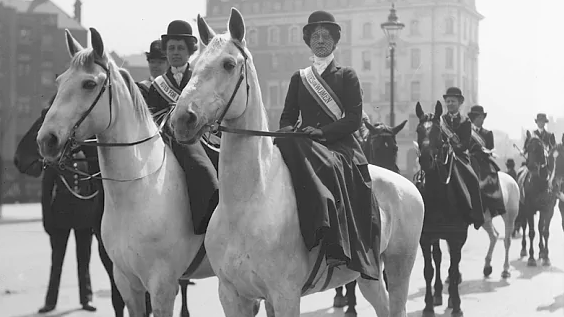
Suffragettes in a horseback procession in 1909
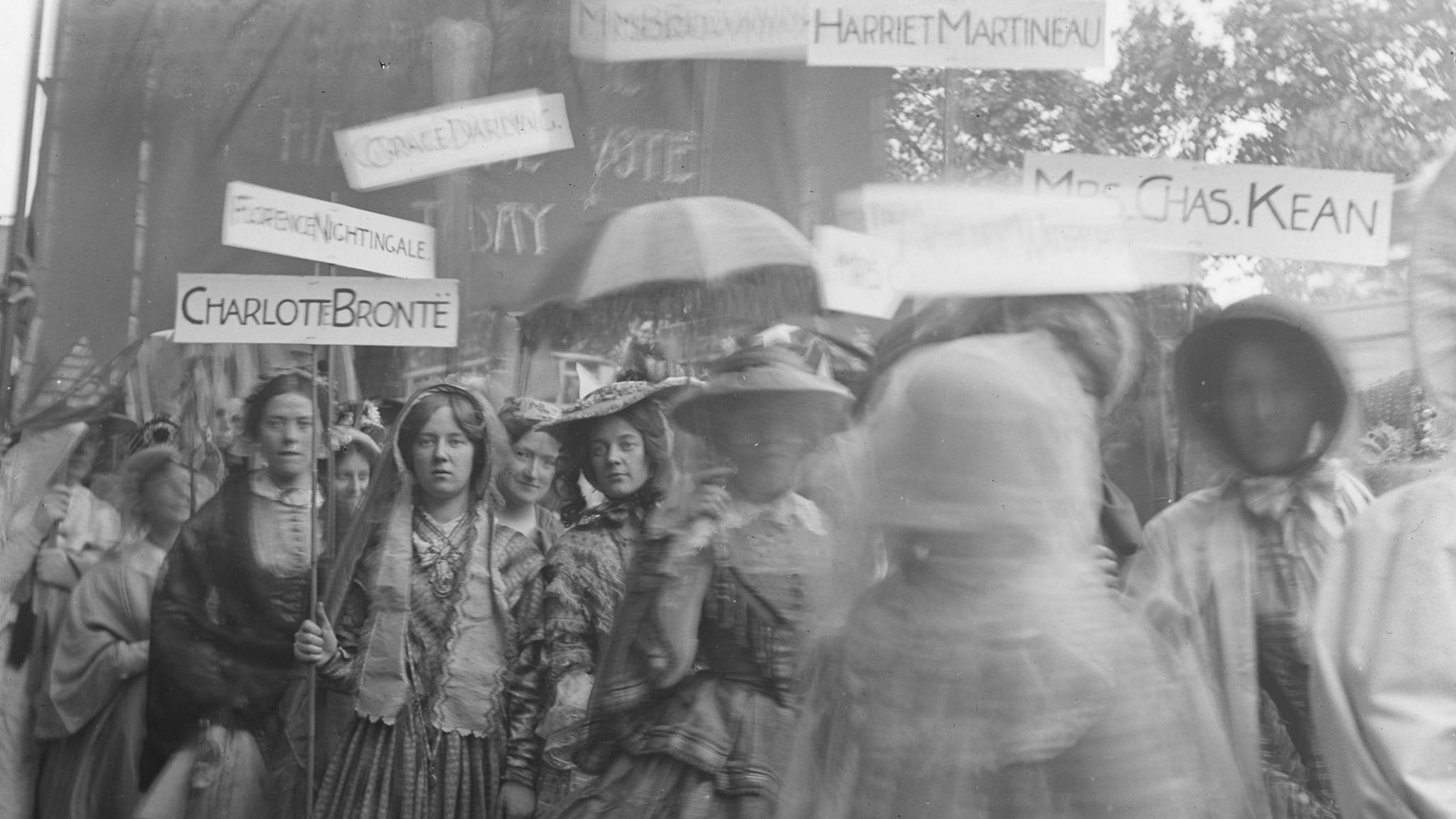
Supporters of women's right to vote march through London in 1911
John Thomson, the Scottish-born photographer whose plaque will be placed at his home in Effra Road, in Brixton, south London, recorded some of the impoverished characters living on the fringes of late 19th Century society in London.
His photographs include Hookey Alf of Whitechapel, who wore a hook in place of the arm he lost in an industrial accident, and hung around the streets of east London looking for casual labour.
Other memorable images in Thomson's catalogue include the 'mush-fakers' in Clapham, who sold and repaired umbrellas - their colloquial name coming from the mushroom shape of the umbrellas.
His photojournalism, deliberately intended to prick the consciences of the Victorian middle classes, included a poignant picture of a destitute woman in Covent Garden, taken in 1877 and entitled 'The Crawlers'.

Thomson recorded the destitution on London's streets in the late 19th Century

A stall in London selling shellfish - captured by John Thomson in 1877
Thomson, who received a royal warrant for his work in 1881, also recorded his travels to Asia, in what was then an innovative mix of photos and text.
He took the first known photographs of the temple of Angkor Wat, in the country known today as Cambodia.
Carrying his bulky camera equipment, Thomson travelled to Singapore, Vietnam, Hong Kong and China, documenting his trip with photographs of the cultural life around him.
"We are now making history," he said in 1891, heralding the new form of journalism which brought pictures and stories to a new and wider audience.

Chinese opera performers, pictured by Thomson in 1870